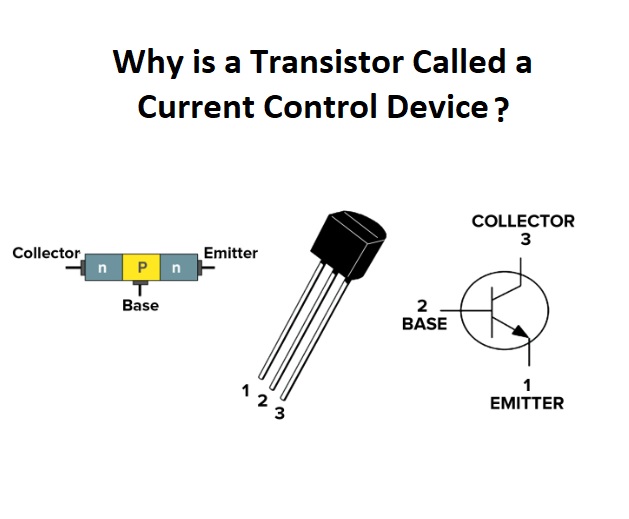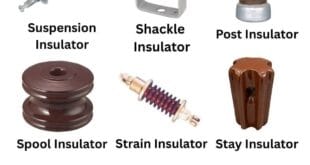Answer:

A transistor is called a current control device because it regulates the flow of electric current between its terminals by using a small input current to control a larger output current. This property is essential for its role in amplification, switching, and signal processing in electronic circuits.
Reasoning:
A transistor is referred to as a current control device due to its fundamental operational principle, which involves using a relatively small input current or voltage to regulate and control a much larger output current. This behavior stems from the underlying physics and the specific mechanisms at play in different types of transistors.
1. Bipolar Junction Transistors (BJTs):
In a BJT, the transistor’s current control behavior is grounded in the control of minority charge carriers (holes or electrons) in a semiconductor material. The BJT consists of three layers: the emitter, base, and collector. The base region is thin and lightly doped compared to the other layers. When a small current flows into the base-emitter junction, it creates a current of minority carriers that “cross” the base layer, enabling the control of a much larger current between the collector and emitter. This is known as the “transistor action.” By modulating the base current, the collector current can be controlled, thus exemplifying the transistor’s current control capability.
2. Field-Effect Transistors (FETs):
FETs operate on the principle of controlling the flow of majority charge carriers (electrons or holes) in a semiconductor channel by applying an electric field via the gate terminal. The gate-source voltage modulates the size of the conductive channel between the source and drain terminals, determining the flow of current. The FET’s gate voltage essentially controls the current flow between the source and drain terminals, making it a current control device. The voltage applied to the gate does not involve significant current flow, making FETs particularly suited for applications requiring high input impedance.
In both BJT and FET configurations, the critical point is that a relatively small input—base current in BJTs or gate voltage in FETs—can influence a much larger output current. This property enables transistors to be used for a range of functions, such as amplification, switching, voltage regulation, and signal modulation. It is this inherent current control capability that makes transistors indispensable components in modern electronics.
Furthermore, the term “current control device” emphasizes the central role of transistors in managing the flow of electric current in electronic circuits. The precise control they offer over current levels is a cornerstone of their utility in designing complex circuits that perform tasks ranging from simple switching operations to intricate signal processing, computational tasks, and communication functions. As a result, the name “current control device” captures the essence of a transistor’s behavior and its significance in modern electronics.
FAQs
Q: Why is a transistor called a current control device?
A: A transistor regulates larger electric currents using smaller input currents.
Q: What is the primary function of a transistor?
A: To control and modulate the flow of electric current in electronic circuits.
Q: How does a transistor achieve current control?
A: It uses a small input current or voltage to influence a larger output current.
Q: What are the two main types of transistors?
A: Bipolar Junction Transistors (BJTs) and Field-Effect Transistors (FETs).
Q: In which layer of a BJT does the current control occur?
A: The base layer, where a small base current controls a larger collector current.
Q: How do FETs control current?
A: FETs use an applied gate voltage to modulate the flow of current between the source and drain terminals.
Q: What is the significance of current control in transistors?
A: It enables functions like amplification, switching, and signal processing in electronic devices.
Q: Why are transistors important in electronics?
A: They form the basis of modern electronic circuits, enabling complex operations.
Q: Can you explain the “transistor action” in a BJT?
A: The minority charge carriers generated by the base current control the larger collector current.
Q: How has the current control capability led to transistor’s widespread use?
A: It allows for precise manipulation of currents, making transistors versatile tools in various applications.
 Electrical Engineering World Wiring a Brighter Tomorrow!
Electrical Engineering World Wiring a Brighter Tomorrow!


